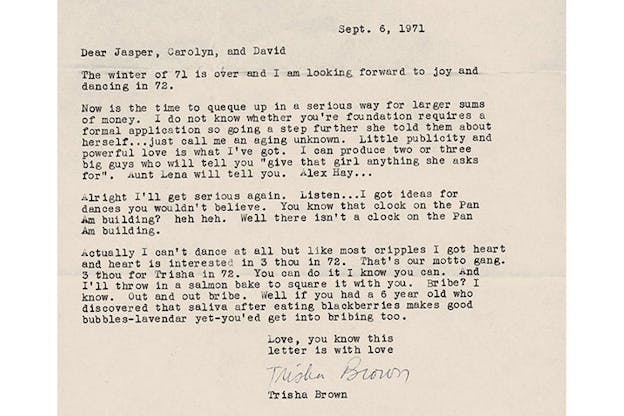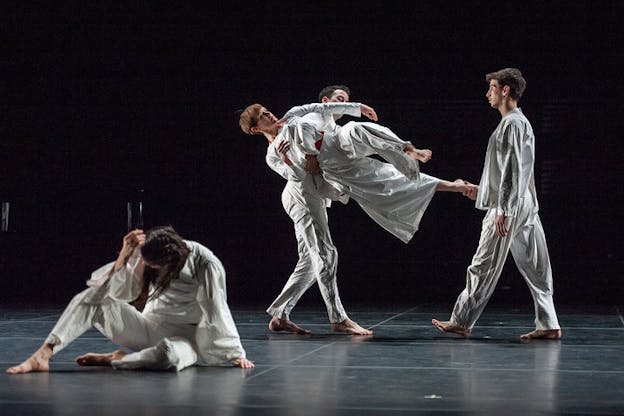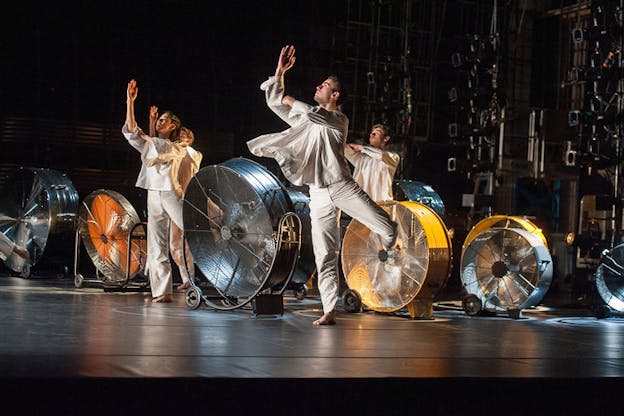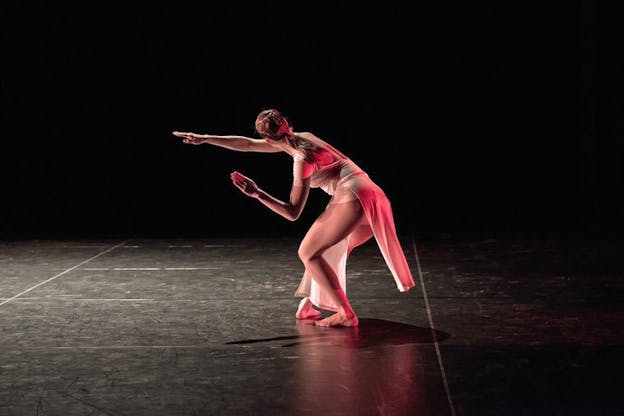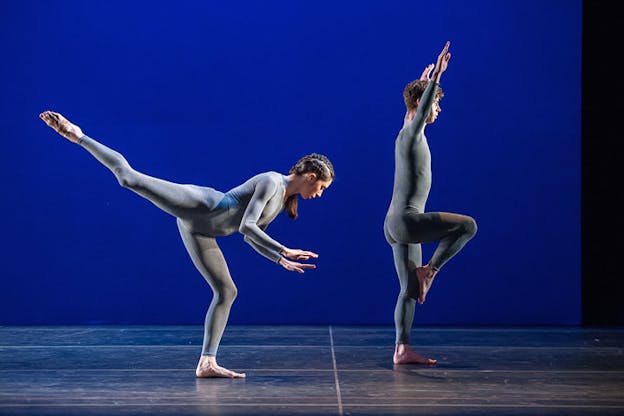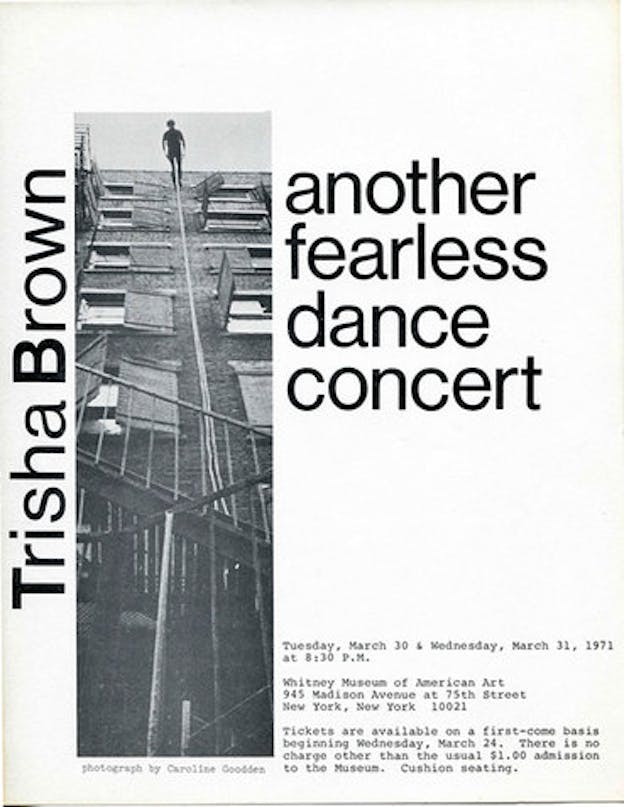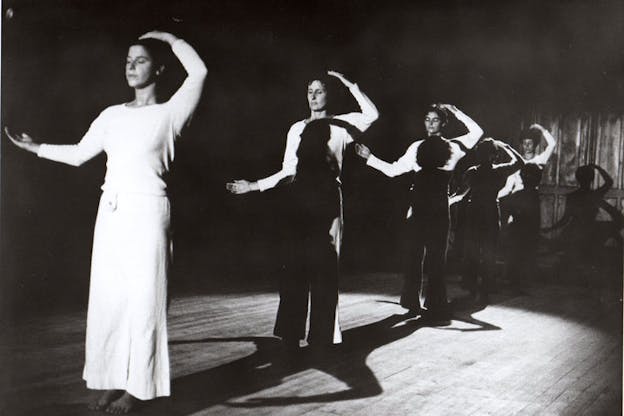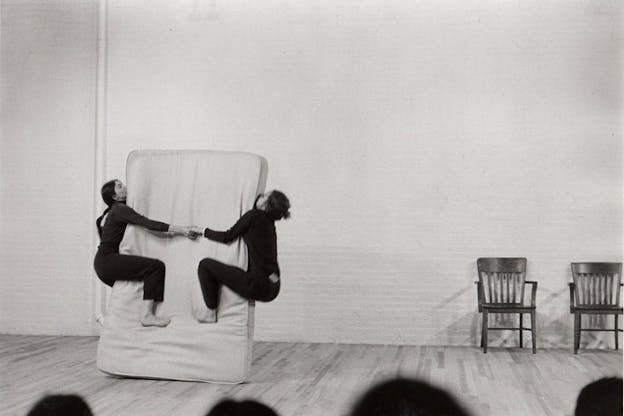Trisha Brown
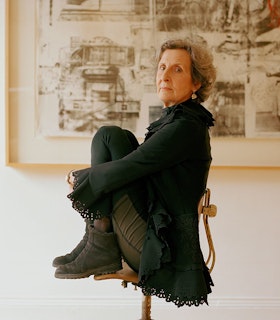
Considering Trisha's deep friendship and collaborations with Robert Rauschenberg, this award was very meaningful to her. FCA's assistance helps to ensure that the legacy of one of the dance world's preeminent icons is preserved and available for current and future generations of artists, students, teachers, and the general public who believe, as we do, in the beauty, genius, and transformative benefit of Trisha's work.
- Barbara Duffy, Executive Director, Trisha Brown Dance Company, January 22, 2013
Artist Statement
I have arrived at some kind of balance between utilitarian, everything's-ok-folks, don't-get-worried movements, and totally chaotic, subversive acts. And it's that conglomerate that is the look of my movement. I don't like to do the same thing twice, either in form or substance, so when I'm making movement, I enjoy finding all the places and things I haven't done with the body.
- December 2012
Biography
Artist, dancer and choreographer Trisha Brown is the first recipient of the Robert Rauschenberg Award. She was born and raised in Aberdeen, Washington. She graduated from Mills College in Oakland, California in 1958; studied with Anna Halprin; and taught at Reed College in Portland, Oregon before moving to New York City in 1961. Instantly immersed in what was to become the post-modern phenomena of Judson Dance Theater, her movement investigations found the extraordinary in the everyday and challenged existing perceptions of performance. Brown, along with like-minded artists, pushed the limits of choreography and changed modern dance forever.
In 1970, Brown formed her company and explored the terrain of her adoptive SoHo making Man Walking Down the Side of a Building (1970), and Roof Piece (1971). Her first work for the proscenium stage, Glacial Decoy (1979), was also the first of many collaborations with Robert Rauschenberg. Opal Loop/Cloud Installation #72503 (1980), created with fog designer Fujiko Nakaya, was followed by Son of Gone Fishin' (1981), which featured sets by Donald Judd. The now iconic Set and Reset (1983), with original music by Laurie Anderson and visual design by Robert Rauschenberg, completed Brown's first fully developed cycle of work, Unstable Molecular Structure. This cycle epitomized the fluid yet unpredictably geometric style that remains a hallmark of her work. Brown then began her relentlessly athletic Valiant Series, best exemplified by the powerful Newark (1987) and Astral Convertible (1989) that pushed her dancers to their physical limits and explored gender-specific movement. Next came the Back to Zero cycle in which Brown pulled back from external virtuosity to investigate unconscious movement. This cycle includes Foray Forêt (1990), and For M.G.: The Movie (1991). Brown collaborated for the final time with Rauschenberg to create If you couldn't see me (1994), in which she danced entirely with her back to the audience.
Brown received three FCPA grants in earlier years. The first was in 1971 to support a concert and to cover rent for six months. Three years later, in 1974, Brown received an FCPA grant to cover the remaining costs for two concerts, including theater rental, publicity, technical and administrative assistance, equipment, props, and costumes. In 1991, Brown received her third FCPA grant that enabled her to commission an original score by Alvin Curran to accompany For M.G.: The Movie, a work she later reprised, with Curran's live performance on piano, at New York Live Arts in 2011.
Brown turned her attention to classical music and opera production, initiating what is known as her Music cycle including M.O (1995) choreographed to Johann Sebastian Bach's Musical Offering. Brown continued to work with new collaborators, including visual artist Terry Winters and composer Dave Douglas, with whom she created El Trilogy (2000). She then worked with long-time friend and artist, Elizabeth Murray to create PRESENT TENSE (2003) set to music by John Cage.
Brown stepped into the world of opera to choreograph Carmen (1986) and again to direct Claudio Monteverdi's L'Orfeo (1998). Since then, Brown directed four more operas, including, Luci Mie Traditrici (2001), Winterreise (2002), and Da Gelo a Gelo (2006) and most recently, Pygmalion (2010). Brown also created O zlożony/O composite (2004) for three étoiles of the Paris Opera Ballet, working with long-time collaborators Laurie Anderson and Jennifer Tipton. Forays into new technology created I love my robots (2007), with Japanese artist and robotics designer Kenjiro Okazaki. Her work with Pygmalion produced two dance pieces: L'Amour au théâtre (2009) and Les Yeux et l'âme (2011). Brown's Robert Rauschenberg Award supported the work I'm going to toss my arms- if you catch them they're yours (2011), a collaboration with visual artist Burt Barr, whose set is dominated by industrial fans. The original music is by Alvin Curran.
As well her work in choreography, Brown is a visual artist, as experienced in It's a Draw (2002). Her drawings have been included in exhibitions at the Venice Biennale, Documenta XII, The Drawing Center, the New Museum, The Museum of Modern Art, the Musée d'art Contemporain de Lyon, the Walker Art Center; Centre Georges Pompidou, and Mills College.
After receiving her Robert Rauschenberg Award, Brown received a BOMB Magazine Award (2013), and an Honors Award given by Dance/USA (2015). Prior to this support, Brown received grants from the National Endowment for the Arts, a Brandeis University's Creative Arts Medal in Dance, and Fellowships from the John Simon Guggenheim Memorial Foundation. Brown was the first woman choreographer to receive the MacArthur Foundation Fellowship "Genius Award"(1991), and was named a Veuve Clicquot Grande Dame. In 2004, Brown was named Commandeur of the Order of Arts and Letters by the French Government. Brown received a New York Dance and Performance "Bessie" Lifetime Achievement Award (2011), and a Dorothy and Lillian Gish Prize (2011).
